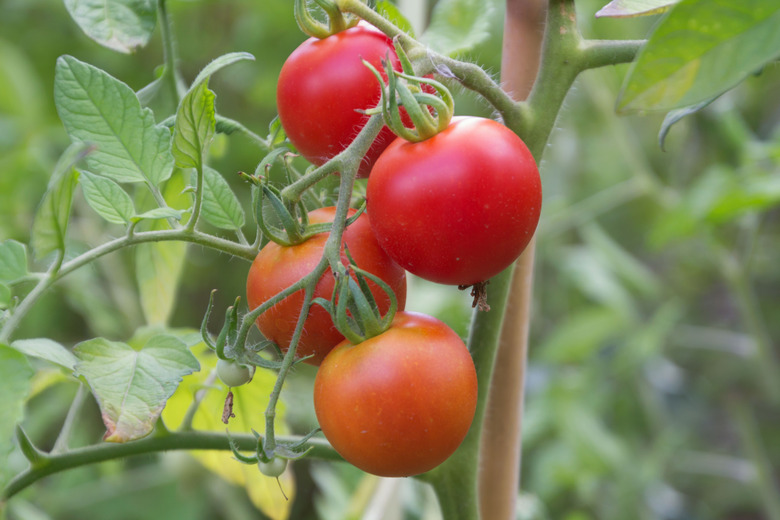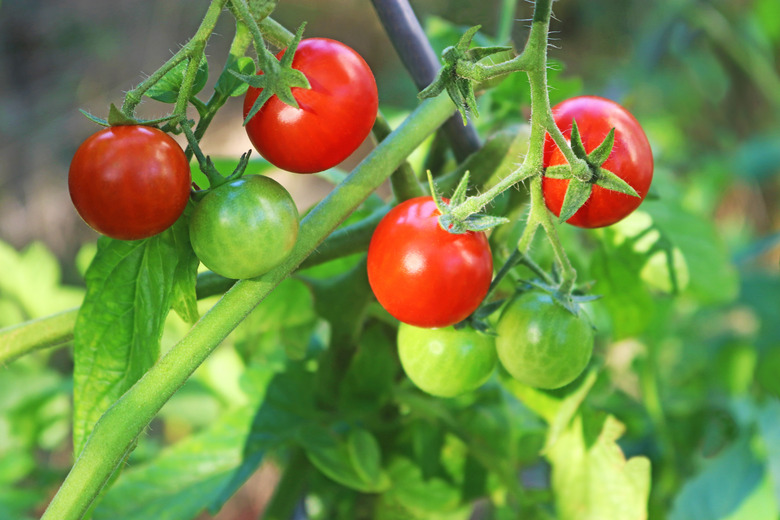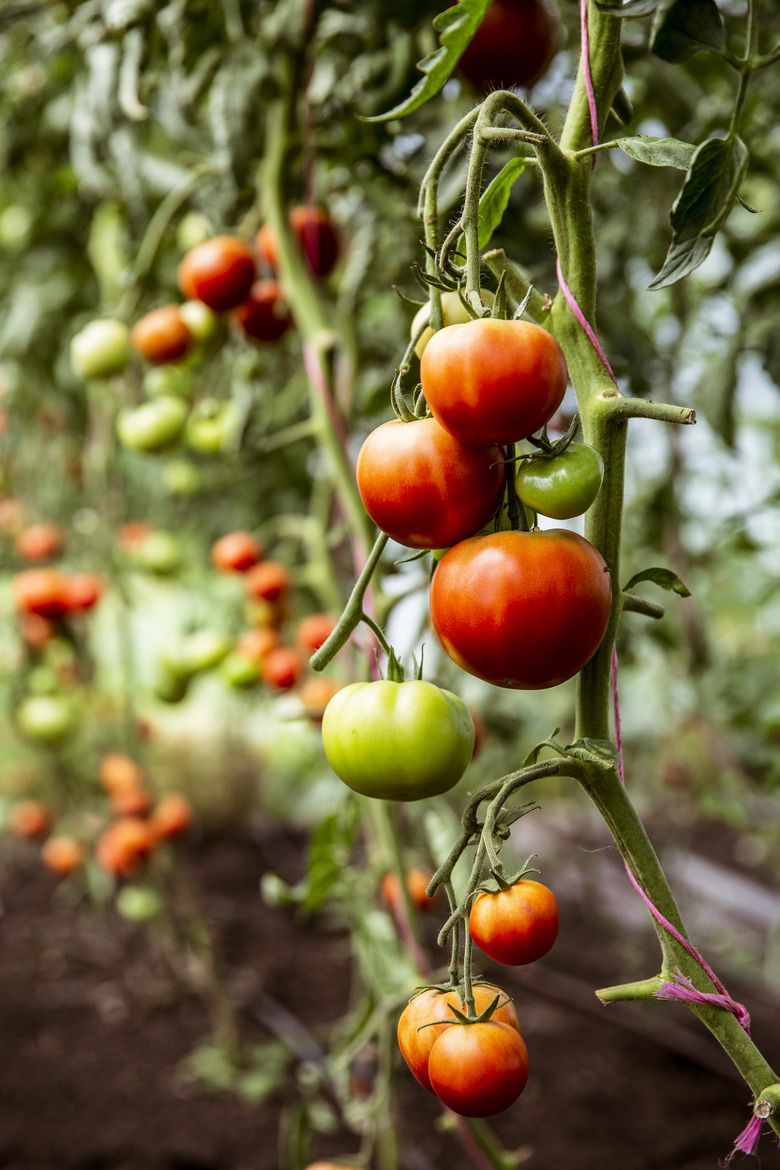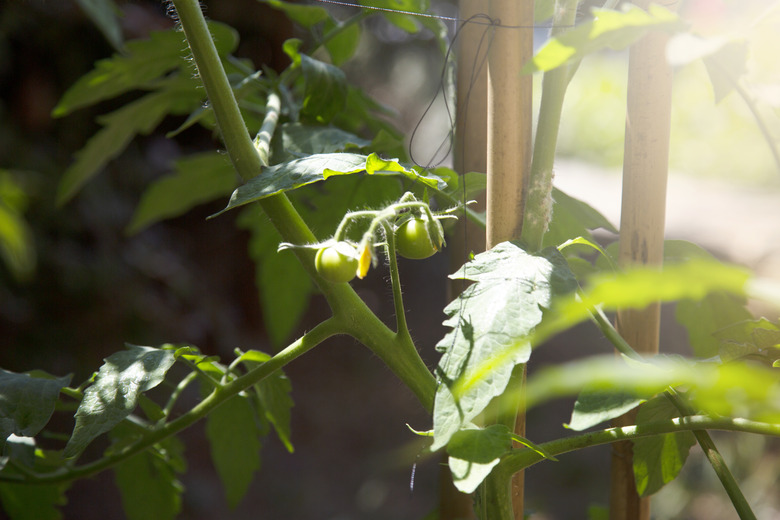How To Grow Tomatoes
We may receive a commission on purchases made from links.
- Best uses for tomatoes
- Starting tomatoes from seed
- Starting tomatoes from a seedling
- In what zone do tomatoes grow best?
- When should you plant tomatoes?
- Soil, sunlight, and water recommendations for tomatoes
- How to propagate tomatoes
- How to harvest tomatoes
- Common pests and other problems for tomatoes
- Common diseases for tomatoes
Summer wouldn't be the same without the fresh fruit (yes, it's a fruit) of the tomato plant (Solanum lycopersicum, USDA hardiness zones 10-11) to add to salads, to garnish burgers, or simply to eat raw with a little salt and pepper and some fresh mozzarella and olive oil. You can find tomatoes year-round courtesy of greenhouse and tropical growers, but the best tomatoes are the ones you grow yourself, and because it's a warm-weather plant, the only time of year you can harvest the ones you grow outdoors is in summer.
There is a dizzying amount of tomato cultivars from which to choose, and the best one depends on your culinary preferences as well as the growing conditions. Some are hybrids, like the popular American Beefsteak tomato, which means the seeds of two different tomato types have been cross-pollinated to combine the best characteristics of both, and others, such as the greenish-orange Carbon tomato, are open-pollinated heirlooms that have been grown for centuries. Some heirloom varieties, which by definition have been around for more than 50 years, tend to be slightly more challenging to grow, but their seeds can be collected and replanted. That is seldom true for hybrids; you usually have to purchase these seeds from a supplier.
Tomatoes take from 60 to 80 days to ripen on the vine, and since that can only happen in hot weather, the growing season is too short in many places to grow them from seed, so most gardeners resort to transplanting store-bought starts. You can plant them in containers or in the ground. Either way, tomato plants are easy to grow provided that they get plenty of water and sun (but not too much of either) and if you can keep the pests and diseases at bay.
Best Uses for Tomatoes
Best Uses for Tomatoes
Tomato varieties can be classified into two categories: determinate and indeterminate. Determinate types tend to be bushy, and they stop growing once they reach a height predetermined by genetics. Indeterminate types, however, tend to grow more like a vine, continuing to grow and produce fruit until the weather becomes too cold. Both types need some kind of support to keep branches off the ground, where they are vulnerable to fungus and rot, but they grow differently and need different types of support.
Because they are bushier and more compact, determinate tomatoes often need little more than staking or a cage for support, but indeterminate types need more. If you plan to plant tomatoes every year, you might consider making an A-frame trellis or erecting large tomato cages or some other more-or-less permanent structure as part of your vegetable garden. If you make it from wood, the structure can even serve as a decorative landscape feature.
Starting Tomatoes From Seed
Starting Tomatoes From Seed
Tomato seeds take seven to 14 days to germinate, and they should be started indoors four to six weeks before the last frost or, if you don't live in a frost-prone area, six to eight weeks before you plan on transplanting them outdoors. Tomato plants need warm soil, so you shouldn't put them outdoors until temperatures warm and the threat of frost has passed.
Sow the seeds about 1/4 inch deep in small containers filled with moist potting mix, putting two or three seeds into each container to ensure successful germination. If all seeds emerge as seedlings, remove the weaker ones by pinching them at ground level, leaving only the strongest one. The soil temperature needs to be 70 to 80 degrees Fahrenheit, so bottom heating is recommended. Some gardeners put the seed trays on top of the refrigerator to take advantage of the warmth generated by the appliance.
When the seedlings emerge, they'll need plenty of light, so if you don't have a bright, south-facing window, place grow lights a few inches above the emerging leaves. Keep the soil moist and watch for legginess, which means the seedlings aren't getting enough light (or the light is too far above the seedlings), or purple coloration, which means they need another shot of quarter-strength water-soluble fertilizer. You should start fertilizing when the seedlings develop their first true leaves.
Starting Tomatoes From a Seedling
Starting Tomatoes From a Seedling
Whether you start the seeds yourself or purchase tomato seedlings, you'll want to make sure the ground will remain warm before transplanting them, so keep an eye on the weather. About a week before transplanting the young plants, prepare the soil by working in organic matter, such as aged compost or manure, to a depth of about a foot and set the stakes or cages so you don't have to do it afterward and possibly damage their root system. At the same time, harden off the seedlings by moving the containers outdoors and gradually exposing them to sunlight.
Directly before planting, add a complete fertilizer, such as a 5-10-5 or 10-10-10 mix, if a soil test indicates the need for fertilizer, and work it into the soil. Avoid high-nitrogen fertilizer, as it will slow development of the fruit. Plant bushy tomato plants 2 feet apart; space larger, vine-like plants 3 to 4 feet apart. The best time to plant is on a cloudy day.
In general, you bury the root ball deep enough for the lower leaves to be at ground level, but if the seedlings are leggy, you can bury as much as 2/3 of the plant, including the lower leaves. Some gardeners even lay the plant horizontally in the soil and bury the main stem, leaving the top leaves exposed, which allows the buried stem to grow roots and the leaves to grow upward.
In What Zone Do Tomatoes Grow Best?
In What Zone Do Tomatoes Grow Best?
Tomatoes need six to eight hours of sunlight a day, thriving in temperatures between 75 and 85 degrees, and they are typically ready for harvest in July or August. These conditions are easy to meet in zones 5, 6, 7, or 8. In more Northern zones with a shorter growing season, you may be limited to growing tomatoes that mature quickly, which are often cherry tomatoes and other relatively small varieties. Water can be a problem in zones 9 and 10, but you can usually mitigate this by installing a drip system or using microsprayers.
When Should You Plant Tomatoes?
When Should You Plant Tomatoes?
Most tomato cultivars take 60 to 80 days to mature, and the soil and air must be warm throughout the entire growing season, so in the cooler climates of zones 3 and 4, it's essential to plant them as soon as it is warm enough, which may not be until May. You have a bit more leeway in zones 5 and warmer, where the planting date can be earlier, but the plants may need partial shade in zones 9 through 11 to protect them from intense midday sunlight. You can usually provide this with shade cloth.
Soil, Sunlight, and Water Recommendations for Tomatoes
Soil, Sunlight, and Water Recommendations for Tomatoes
Tomatoes need moist, well-draining soil, and they require a lot of nutrients, so before planting them, it's a good idea to mix in manure or compost. A starter fertilizer is recommended for young seedlings as well as a regular application of a balanced fertilizer when the plants are growing.
The tomato plant needs six to eight hours of direct sunlight daily during the growing season, so it needs to be in the sunniest part of the garden. The top leaves will wilt and dry out if they get too much sun, however, so have some shade ready to deploy if that happens.
Don't let your tomato roots dry out. Water seedlings generously when planting them and then continue to water in the early morning or late evening to bring the average weekly water level to about 2 inches, including rainfall. Spreading mulch around the base of each plant helps retain moisture and inhibit weed growth, and mulching also helps protect the lower leaves from splashes when you water the plants.
How to Propagate Tomatoes
How to Propagate Tomatoes
A good way to increase your tomato yield is to take cuttings from existing plants and replant them, and it's actually a good idea to prune tomatoes to increase the amount of energy sent to the main stem. Snip unwanted side shoots with bypass clippers, set them in a glass of water with the leaves hanging out and wait for the roots to develop, which takes two to four weeks. Plant the roots in about 4 inches of soil and water and fertilize, and you'll have a second harvest later in the summer.
If you're growing a cultivar with viable seeds (usually an heirloom, not a hybrid), you can collect the seeds from the middle of the fruit, dry them and store them for planting the following year. Don't take seeds from split fruit because pathogens can often enter through the cracks. The seeds are coated with a mucilaginous gel, and if you soak them for a day, wash off this gel and dry the seeds, they will keep longer.
How to Harvest Tomatoes
How to Harvest Tomatoes
Tomatoes will ripen off the vine, so the best time to harvest them is when they are primarily green but with a hint of red (if the cultivar you're growing matures to a red color). If you wait for the fruit to turn red on the vine, it may be overripe or have split when you finally do pick it. The procedure for picking ripe tomatoes is straightforward: Hold the stem with one hand and the fruit with the other and pull to break the calyx. Storing green tomatoes in old newspaper helps them ripen quicker.
Common Pests and Other Problems for Tomatoes
Common Pests and Other Problems for Tomatoes
Aphids are a common problem when growing tomatoes. They congregate on the undersides of the leaves, sucking nutrients and leaving a sticky substance called honeydew that promotes sooty mold growth. If you see aphids, you can usually remove them by spraying with water or a solution of dish soap and water.
Spider mites, which weaken plants and inhibit growth, are especially attracted to dry plants, so you probably won't have to deal with them if you keep your tomatoes watered. If the plants are already infected, spray them with water to remove the mites and then cover the plants with a row cover for a few days to create shady, humid conditions to repel them.
The tomato hornworm is a caterpillar with a voracious appetite that will eat holes in the leaves. Look closely for these pests, pick them off the plants by hand and relocate them.
Common Diseases for Tomatoes
Common Diseases for Tomatoes
Late blight is a fungal-like pathogen that affects leaves, stems, and fruit and can quickly decimate a crop. Leaves turn brown and develop a powdery film, and fruit is misshapen and stunted. This disease usually strikes in cool, wet weather, and in its early stages, it can be treated with a homemade remedy or with a fungicide. If it's a persistent problem in your area, consider planting blight-resistant varieties.
Tomatoes are susceptible to fungal diseases like septoria leaf spot, which affects the leaves but not the fruit and can be prevented with a protective fungicide.
Blossom end rot isn't a disease but a physiological disorder caused by calcium deficiency, and it usually occurs in dry weather when the plants don't get enough water. The bottoms of the fruit blacken and shrivel, and the fruit has to be discarded. You can prevent this by keeping your tomato plants adequately watered.



